Ecological dynamics
Natural Vegetation and Succession:
Scrub vegetation is resilient, and rapidly recovers following infrequent fires. There is little change in dominant species composition before or after intense fires, with the exception of sand pine (Abrahamson 1984). Dominant clonal oaks persist and re-sprout rapidly from underground parts in the post-fire environment (Abrahamson 1984). However, there are temporal patterns in post-fire scrub recovery. Myrtle oak (Q. myrtifolia) growth is most rapid immediately following fire, whereas sand live oak (Q. geminata) growth peaks years after fire. Similarly, herbaceous growth and diversity peaks two years following fire, and then dissipates as woody cover increases (Freeman and Kobziar 2011). In contrast, yellow sands scrubs of the Lake Wales Ridge region in LRU 154.2 show very little compositional turnover following fire (Abrahamson 1984).
Other common scrub plants reseed and colonize amid post-fire conditions (Johnson 1982, Menges and Hawkes 1998). The most notable seeder is the Florida peninsula variety of sand pine (Pinus clausa var. clausa). This pine species is short lived (< 80 years) and has serotinous cones which open after being super-heated. Seeds colonize open ground following intense fires. Sand pine seedlings are shade tolerant, thus able to grow amid dense scrub oak cover (Greenburg et al. 1995, Freeman and Kobziar 2011). Fire return intervals in excess of 80 to 90 years disfavor sand pine regeneration, leading to “oak scrub” lacking pine canopy cover. Conversely, fire return intervals of less than 15 years in scrub may prevent sand pine regeneration, as seedlings are fire intolerant (Myers 1995, Menges and Hawkes 1998).
In the long term absence of fire (greater than 100 years) scrub vegetation of Xeric Bicolor Sandy Uplands will eventually transition to xeric hammock, as sand live oak overtops other oaks and forms a closed canopy (FNAI 2010). Xeric hammock does not differ much from scrub in terms of floristic composition, although the two communities are structurally distinct (forest vs. shrubland). The closed canopy, moist ground cover litter, and almost complete absence of herbaceous vegetation of xeric hammocks precludes fire spread in all but extremely droughty conditions (Givens et al. 1984, Myers and White 1987). Under these circumstances, intense canopy fire will kill all above ground vegetation, and trigger succession to scrub vegetation.
Wind and water damage associated with hurricanes and strong storms affect the ecological dynamics and distribution of scrub vegetation. Although hurricanes usually dissipate before reaching the interior of the peninsula, large storms do affect the region on the order of two to three storms per century (Myers and Ewel 1990). Strong winds can cause widespread pine mortality in sand pine dominated scrubs. Sand pines have shallow root systems and are particularly susceptible to wind throw. Similar to catastrophic fire, large scale wind throw can affect transition from late to early successional scrubs. Fire following wind damage may be particularly intense because of the abundance of dead woody fuels.
Other natural disturbances that affect Xeric Bicolor Sandy Uplands include pine and hardwood mortality caused by insects and pathogen. Southern pine beetle (Dendroctonus frontalis; SPB) is a species of bark beetle native to the Southeastern Coastal Plain. Periodically SPB populations increase to epidemic levels and healthy pines are killed as infestations expand. Most susceptible to SPB mortality are densely planted even-aged loblolly and longleaf pine stands, which is common in community timber plantations (Schowalter et al. 1981). However, in epidemic conditions SPB will kill sand pines as well.
Biogeography/Regional variation of the Site:
The Xeric Bicolor Sandy Uplands Ecological Site has a broad geographic distribution in Peninsular Florida. Accordingly, climatic, abiotic environment and biogeography varies considerably, as does species composition, successional patterns, and ecological dynamics of the site. Furthermore, historical fire regimes differed between the north and south portions of MLRA 154 (LRU 154.1 vs. LRU 154.2); fire was differently affected by seasonal rainfall and lightening patterns, frontal systems, and prehistoric land uses (Myers and White 1987).
State 1
Xerophytic Scrub SHRUBLAND
State 1 vegetation is scrub or xeric hammock. These natural communities are comprised of dense growths of scrub oaks (myrtle, Chapman’s and sand live oaks) and palmetto (saw and scrub palmetto). Phases within this State vary in their community structure and periodicity of fire (or other natural or anthropogenic disturbances).
Community 1.1
Early successional SHRUBLAND

Figure 11. Phase 1.1 scrub vegetation
Phase 1.1 vegetation is predominantly dense growths of scrub oaks (myrtle, Chapman’s and sand live oaks) and palmetto (saw and scrub palmetto). Canopy is absent in this early successional phase, either because sand pine seed source is unavailable or has not yet colonized the stand following disturbance. The dense establishment of clonal oaks discourages colonization of other pine species (longleaf and slash pines), as these species require abundant light and bare ground for germination. Phase 1.1 scrub oaks reach heights of 3 to 5 feet (0.9 to 1.5 m).
Herbaceous ground cover of Phase 1.1 is very sparse or completely absent. Where it occurs, ground cover vegetation is patchily distributed. Because of the dominance of a few clonal oaks and paucity of herbaceous species, small scale diversity of Phase 1.1 is very low (average 19 species / 400 m2, NRCS inventory data 2014). The diversity and density of herbaceous plants are highest in the years immediately following fire, gradually decreasing as oak growth dominates (Menges and Hawkes 1998).
The pre-settlement composition and structure of Phase 1.1 scrub was maintained by fire. Although estimates vary in the literature, pre-settlement fire regimes of Central Florida scrubs had infrequent return intervals of once every one to several decades (Myers 1985). Scrub vegetation of the bicolor soils may have burned with greater frequency compared to shrubs on white sand Entisols, due to relatively higher vegetation productivity. Scrub fires ignite in drought conditions, and are typically are very hot and intense. Clonal scrub oaks and palmettos vigorously re-sprout, rapidly re-colonizing the post-fire environment (Abrahamson 1984; Freeman and Kobziar 2011). Recovery of pre-fire plant composition and cover typically occurs within 1 to 5 years following fire, although oak height growth continues for longer periods (Abrahamson 1984; Schmalzer 2003). Non-clonal plants, including herbaceous plants, are typically killed in hot fires. Some species which are prolific seeders (such as Florida rosemary), will recolonize post-fire (Johnson 1982).
Maintenance of Phase 1.1: Early successional scrub is maintained by occasional large scale disturbances. Fires, with return intervals of once every 5 to 20 years are frequent enough to preclude development of sand pine or oak dominated canopies. Other natural disturbances affecting scrub succession are strong winds associated with storms and hurricanes (Myers 1985). Mechanical treatments may maintain the low stature of scrub oaks; these include chopping and chain dragging and other forms of disturbance to the soil surface (but not soil penetration; Greenberg 2003).
Forest overstory. Pinus clausa (Sand pine)
Midstory:
Pinus clausa
Quercus geminata
Quercus laevis
Quercus chapmanii
Quercus myrtifolia
Vaccinium arboreum
Carya floridana
Lyonia ferruginea
Forest understory. Balduiana angustifolia
Carphephorus paniculatus
Centrosema sp.
Chapmannia floridana
Cnidoscolus stimulosus
Commelina erecta
Eupatorium compositifolium
Galactia elliottii
Galactia regularis
Gaylussacia dumosa
Gaylussacia nana
Gelsemium sempervirens
Helianthemum nashii
Monotropa uniflora
Opuntia humifusa
Palafoxia feayi*
Parthenocissus quinquefolia
Pityopsis graminifolia
Smilax auriculata
Smilax glauca
Smilax pumila
Solidago odora var. chapmanii
Tephrosia mysteriosa
Tillandsia sp.
Tragia urens
Vitis rotundifolia
Andropogon floridanus
Andropogon virginicus
Dichanthelium dichotomum
Dichanthelium sabulorum var. thinium
Sorghastum secundum
Cladonia spp.
Usnea spp.
Selaginella arenicola
Asimina obovata
Callicarpa americana
Ceratiola ericoides
Garberia heterophylla
Licania michauxii
Rhus coppalina
Sabal etonia
Serenoa repens
Sideroxylon tenax
Vaccinium myrsinites
Vaccinium stamineum var. ceasium
Carya floridana 1
Ilex opaca var. arenicola
Persea borbonia var. humilis
Table 7. Canopy structure (% cover)
| Height Above Ground (ft) |
Tree |
Shrub/Vine |
Grass/
Grasslike |
Forb |
| <0.5 |
0-25% |
20-80% |
0-5% |
0-2% |
| >0.5 <= 1 |
0-25% |
50-90% |
0% |
0-1% |
| >1 <= 2 |
0-25% |
50-90% |
0% |
0% |
| >2 <= 4.5 |
0-5% |
0-25% |
0% |
0% |
| >4.5 <= 13 |
0% |
0% |
0% |
0% |
| >13 <= 40 |
0% |
0% |
0% |
0% |
| >40 <= 80 |
0% |
0% |
0% |
0% |
| >80 <= 120 |
0% |
0% |
0% |
0% |
| >120 |
0% |
0% |
0% |
0% |
Community 1.2
Late successional pine-oak scrub WOODLAND
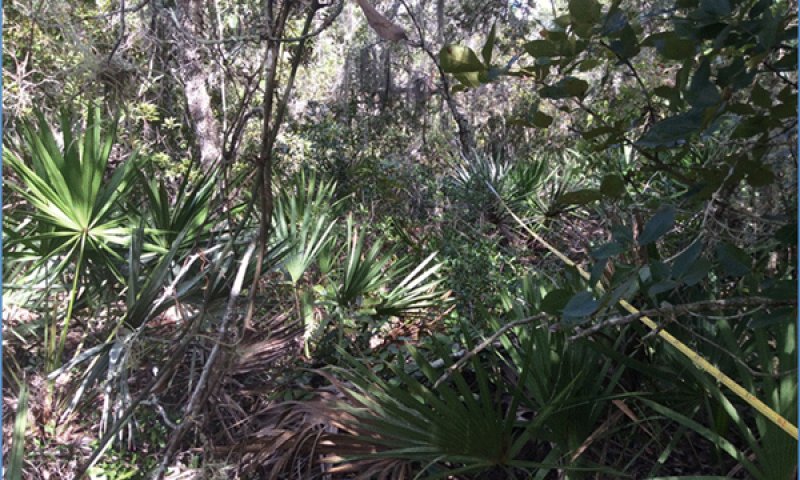
Figure 12. Late successional pine-oak scrub woodland
Phase 1.2 is dominated by dense growths of scrub oaks (Q. myrtifolia, Q. chapmannii, Q. geminata) mixed with palmetto (saw and scrub palmetto), and a few other xeriophytic hardwood species. Species composition of Phase 1.2 is very similar to that of Phase 1.1; the main difference between these Phases is structural. Shrub growth is very dense and can reach >10 feet (3 m) in height, although midstory is generally lower in stature under dense pine canopy. Where present, sand pine canopies are typically even-aged, an artifact of seedling colonization following intense fire or logging (Laessle 1958). Sand pine canopies only form where seed source is available.
Herbaceous ground cover of Phase 1.2 is very sparse or absent. With prolonged fire exclusion, patches of open ground occur following death of individual oak clones. These patches often support abundant growth of fire intolerant fruticose lichens (members of the genus Cladonia). Dense accumulations of pine needles and hardwood leaves are also typical in the prolonged absence of fire.
Phase 1.2 describes the late successional conditions of scrub communities which are adapted to infrequent and intense fires, on the order of two to three fires per century (FNAI 2010; Myers 1985). Coarse, woody fuels of Phase 1.2 only carry fire in extreme weather and drought conditions. If fire return interval is less than the typical lifespan of sand pine (60 to 70 years), fires will trigger regeneration of sand pine from serotinous cones. Sand pine can rapidly reseed post-fire conditions.
Table 8. Ground cover
| Tree foliar cover |
10-75%
|
| Shrub/vine/liana foliar cover |
0-1%
|
| Grass/grasslike foliar cover |
0-2%
|
| Forb foliar cover |
0-1%
|
| Non-vascular plants |
5-75%
|
| Biological crusts |
0%
|
| Litter |
10-80%
|
| Surface fragments >0.25" and <=3" |
0-2%
|
| Surface fragments >3" |
0%
|
| Bedrock |
0%
|
| Water |
0%
|
| Bare ground |
0-50%
|
Community 1.3
Xeric Hammock FOREST
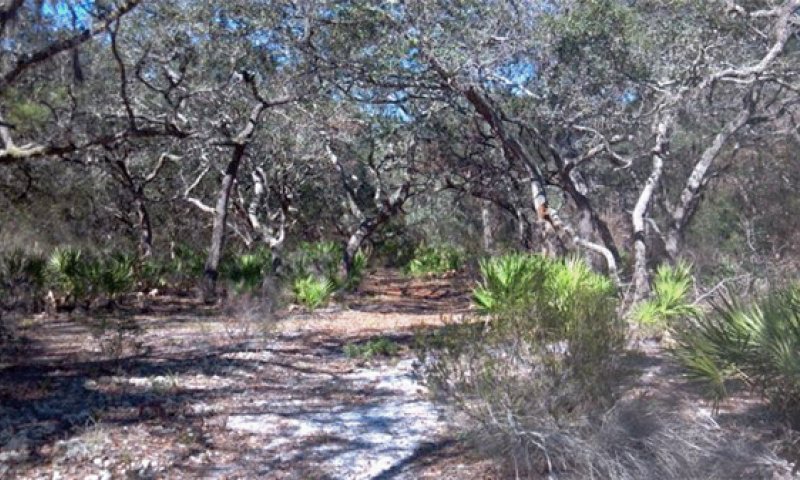
Figure 13. Xeric hammock Forest
Phase 1.3 describes late successional vegetation resulting from long term fire suppression (> 100 years) of former scrub (FNAI 2010). This phase represents Xeric Hammock, a natural community type recognized by the Florida Natural Areas Inventory (FNAI 2010).
Compositionally, Phase 1.3 resembles Phases 1.1 and 1.2, in that the same clonal oak species are dominant (Q. myrtifolia, Q. chapmannii, Q. geminata). However, this phase is a forest with a closed canopy of sand live oak (Q. geminata), overtopping lower growths of clonal scrub oaks and hardwood seedlings. Sand pine is either absent, having failed to regenerate under densely forested conditions, or is present as a few old emergent trees.
The mid- and under-story strata are overwhelmingly dominated by scrub oaks and palmetto. Other shrubs are sometimes irregularly distributed, including rusty staggerbush (Lyonia ferruginea), sparkleberry (Vaccinium arboreum), deerberry (V. stamineum), garberia (Garberia heterophylla), and Florida rosemary (Ceratiola ericoides).
Herbaceous ground cover in Phase 1.3 is very sparse or absent. The forest floor is covered with oak leaf litter which holds considerable moisture, creating mesic conditions at ground level and further depressing native herbaceous growth as well as pine germination (FNAI 2010).
The Xeric Hammock community itself is fire resistant. Fine fuels are absent, and hardwood litter retains ample moisture which deters fire spread. Extreme drought conditions are necessary for fire ignition. Unlike surface fires, these intense fires consume most standing biomass. In xeric hammocks, clonal oaks quickly re-sprout from extensive rhizome systems, impeding colonization of pines and herbaceous species.
Pathway 1.1A
Community 1.1 to 1.2
Early successional SHRUBLAND
Late successional pine-oak scrub WOODLAND
Fire suppression or very infrequent fire (on the order of once every 50+ years) allows the establishment of sand pine overstory and dense oak midstory, which are typical of late successional pine-oak Scrub (Phase 1.2). Colonization of sand pines will occur in the presence of seed sources. In the absence of sand pine, sand live oaks will eventually form a dense midstory and overstory.
Pathway 1.2A
Community 1.2 to 1.1
Late successional pine-oak scrub WOODLAND
Early successional SHRUBLAND
Phase 1.2 describes changes from reference site condition via natural succession and/or alteration of historical fire regime. Plant species typical of Phase 1.1 scrubs are still present in Phase 1.2, although shifts in relative abundances and structure have occurred. Transition from Phase 1.2 to Phase 1.1 occurs following a hot fire (that consumes most above ground biomass). Additionally, mechanical methods affect reduction of shrub biomass, such as clearcutting and site preparation. Shifts to Phase 1.1 early successional scrub occurs following one or more of these events.
| Brush Management |
|
| Prescribed Burning |
|
| Land Clearing |
|
| Tree/Shrub Site Preparation |
|
| Native Plant Community Restoration and Management |
|
Pathway 1.2B
Community 1.2 to 1.3
Late successional pine-oak scrub WOODLAND
In the continued absence of fire (> 100 years) Phase 1.2 scrub will succeed to Phase 1.3 (Xeric Hammock). This occurs when the larger statured sand live oaks overtop the other scrub oaks creating a closed canopy, coupled with the eventual mortality of canopy sand pines and lack of sand pine regeneration.
Pathway 1.3A
Community 1.3 to 1.1
Early successional SHRUBLAND
A single catastrophic fire or a series of hot intense fires could possibly convert Phase 1.3 to early successional Scrub (Phase 1.1) if the fire is hot enough to kill the oak overstory. Similarly, other natural disturbances which remove the sand live oak canopy will affect transition to Phase 1.1, including strong winds associated with hurricanes and storms.
Mechanical treatments can affect transition of Xeric Hammock to early successional scrub (Phase 1.1). These include clear cutting of oak overstory, and mechanical chopping to reduce oak cover.
| Brush Management |
|
| Prescribed Burning |
|
| Land Clearing |
|
| Tree/Shrub Site Preparation |
|
State 2
Restored Scrub SHRUBLAND
Planted oak shrubland for the purpose of scrub restoration. This state describes scrubs with restored community structure and function, and restored ecological processes.
Compositionally, restored scrubs are similar to the reference site condition, but lack the full compliment of native scrub plant species.
Community 2.1
Planted oak sparse SHRUBLAND
Phase 2.1 describes a restored shrubland with similar structure and ecological function to that of native scrub (Phases 1.1 and 1.2). Notably, this Phase describes conditions where native propagules have been extirpated following long term fire suppression and/or extensive soil disturbance associated with commodity land uses, followed by artificial establishment of native clonal oaks and other scrub shrub species. Many native species are absent, and weedy or residual non-native species may persist in this restored scrub community. Herbaceous species are absent, weedy or non-native, depending on pre-restoration conditions and geography.
Restoration of native oaks in Phase 2.1 provides fuels for infrequent fires necessary for ecological functioning and dynamics. Once established, clonal oaks may provide habitat suitable for establishment of other native plant populations, either from artificial seeding or natural recruitment. Phase 2.1 scrub may provide suitable habitat for nesting birds, amphibians and reptiles (such as the gopher tortoise and indigo snake).
The full complement of scrub species composition remains incomplete in Phase 2.1. Perennial grasses and forbs with seed dispersal mechanisms not conducive to colonization of distant and disturbed sites are notably absent (i.e. big seeded species which rely on animal and gravity dispersal, and long lived clonal species). However, over time, native scrub plants may recolonize the Site, particularly wind-dispersed native herbaceous species.
State 3
Invasive non-native community
This state describes vegetation dominated by non-native and noxious plant species. Noxious plant dominance changes not only the composition of scrub communities, but structure and ecological dynamics as well.
Community 3.1
Cogongrass
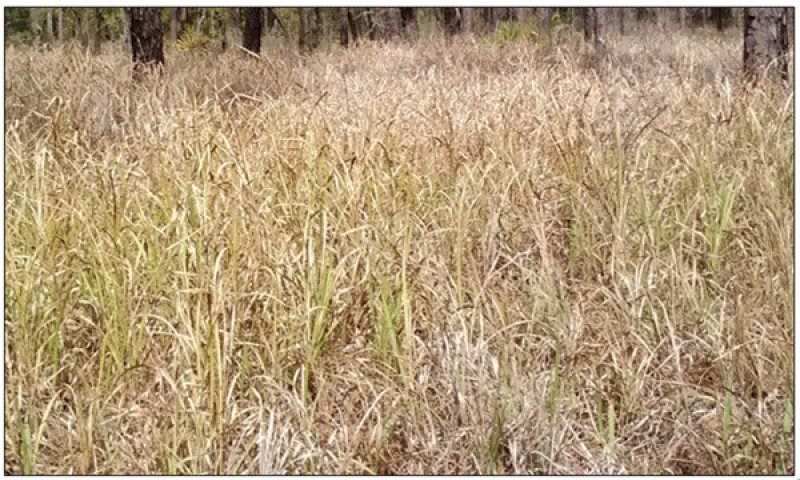
Figure 14. Cogongrass grassland
Phase 3.1 describes a condition where one or more noxious non-native plant species has invaded and dominated the site. By far the most common noxious invasive plant species of this site is cogongrass (Imperata cylindrica; (MacDonald 2004)). This highly clonal grass spreads rapidly by underground rhizomes and windblown seeds, forming dense circular patches which can become very large (on the order of 100’s of acres). Cogongrass grows vigorously in full sunlight and thrives on acidic, nutrient-poor soils and droughty conditions such as those of this Site (MacDonald 2004). Furthermore, cogongrass is a prolific seed producer, and readily invades following soil disturbances. (Yager et al. 2010). Once clones are established, rapid cogongrass growth will extirpate native ground cover plant populations. In addition, cogongrass may be allelopathic in some situations (Bryson and Carter 1993).
Cogongrass invasion of the infertile Entisols of this site may occur with less frequency than on more fertile soils. In general, cogongrass may colonize the phases of this site that have plenty of sun exposure and open ground. Soil disturbance is conducive to cogongrass colonization. A Phase 3.1 community may have oaks in the midstory or canopy, overtop a solid sward of pure cogongrass. Similarly, cogongrass can occur as pure grasslands with no trees or shrubs. Cogongrass infestations of commodity lands can damage crops directly by yield reduction and suppressed growth from competition for nutrients and moisture. Furthermore, cogongrass is very poor forage and infestation lowers the forage quality of pasture lands (Coile and Shilling 1993).
State 4
Active commodity production / fallow
All phases of state 4 (except Phase 4.1) describe commodity land uses of Xeric Bicolor Sandy Uplands. Common crops of Central Florida xeric sands include annual and perennial crops, the most notable of which is citrus (although this is limited LRU 154.2 for the most part). Other crops include horticultural ornamentals, vineyards, and some row crops. Pine plantations managed for community pulpwood production are included in State 4. Additionally, improved pastures of bahiagrass (or other sod forming grass species) are included in this state.
All Phases describe conditions following ground penetrating soil disturbance, and the absence of native plant communities. This includes the extirpation of native populations, including seed banks and dormant propagules, although native weedy species may persist. Depending on the severity and frequency of ground disturbance, soil profile characteristics in the upper part of the soil may be altered.
Community 4.1
Fallow: cleared/plowed
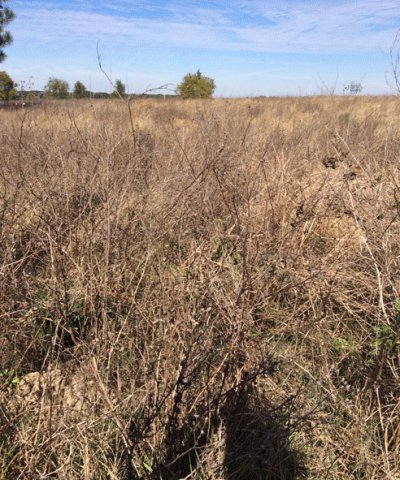
Figure 15. Fallow fields, native community removed.
Phase 4.1 describes a non-production condition of “cleared or fallow fields”, generally either preceding land conversion, or following crop abandonment. Plant species of Phase 4.1 includes weedy native and non-native plants. If soils were recently tilled, most plants will be annual, predominantly wind dispersed weeds. If the previous land use was improved pasture or plantation with sod grass, bahia or centipede grass may predominate.
Community 4.2
Planted pine plantations
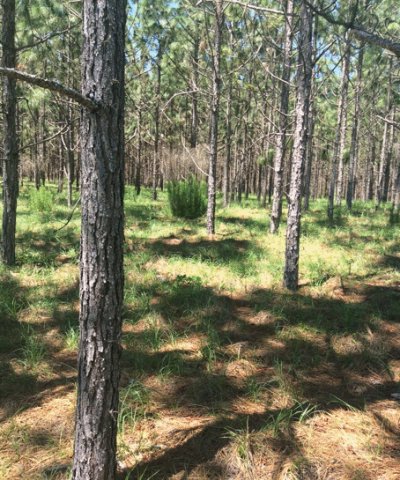
Figure 16. Planted pine plantations, non-native or weedy grou
Phase 4.2 describes commercial pine plantations. Tree species grown for commodity production on this Site include sand, longleaf and slash pines. Pine plantations are usually very densely planted and even aged stands. Ground cover and midstory vegetation of pine plantations is usually sparse or absent, depending largely on the age of the plantation. The ground is typically covered with needle fall following canopy closure.
Community 4.3
Seeded Pasture: non-native grasses
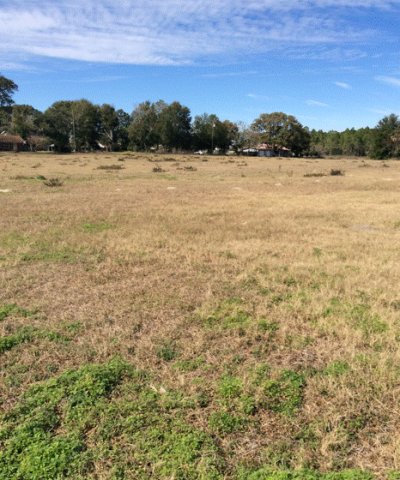
Figure 17. Seeded Pasture: non-native grasses
Phase 4.3 describes pastures with established non-native turf grasses, which support livestock production or horse farms. Sod grasses almost completely replace native plant species. Some hardwood species may persist depending on the degree of land clearing.
Community 4.4
Crop production: annual and perennial crops
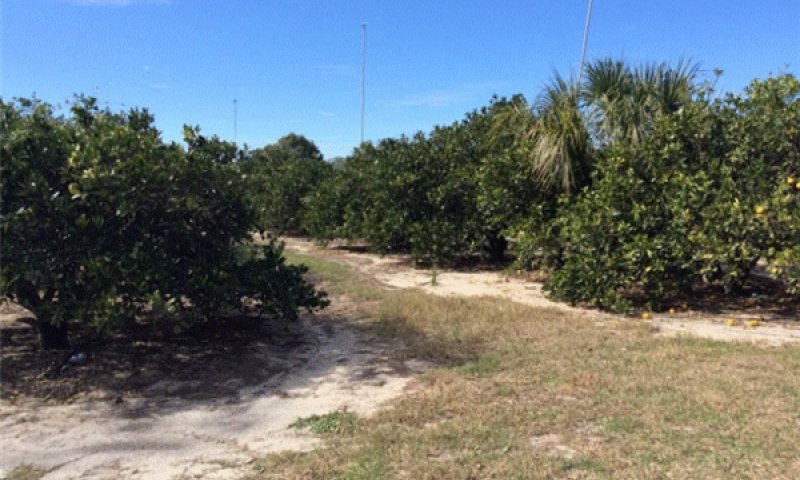
Figure 18. Crop production: annual and perennial crops
Phase 4.4 describes croplands. Included in this category are annual and perennial croplands (i.e. fruit and ornamental orchards, sod farms, etc).
Pathway 4.1A
Community 4.1 to 4.2
Transitions among the Phases of State 4 are affected by land use and land conversion practices. Transition from cleared/fallow fields to timber plantations involve site prep and tree planting. Maintenance of pine plantations may involve thinning and ongoing hardwood control.
Pathway 4.1B
Community 4.1 to 4.3
Seeded Pasture: non-native grasses
Transitions among the Phases of State 4 are affected by land use and land conversion practices (i.e. land clearing, raking, disking, planting, chemical treatments). Transition from cleared/fallow fields to improved pasture involves site prep (mechanical and/or chemical) and seeding with Bahia or other pasture grasses.
Pathway 4.1C
Community 4.1 to 4.4
Crop production: annual and perennial crops
Transitions among the Phases of State 4 are affected by land use and land conversion practices. Transition from cleared/fallow fields to annual or perennial crop production depends on the specific land conversion needs for the crop.
Pathway 4.2A
Community 4.2 to 4.1
Transition to all other States and Phases involves conversion of pine plantation to Phase 4.1 (cleared land). This includes clear cutting and/or site prep.
Pathway 4.3A
Community 4.3 to 4.1
Seeded Pasture: non-native grasses
Transition to all other States and Phases involves conversion of pine plantation to Phase 4.1 (cleared land). For this Phase, this may only involve field abandonment.
Pathway 4.4A
Community 4.4 to 4.1
Crop production: annual and perennial crops
Transition to all other States and Phases involves conversion of pine plantation to Phase 4.1 (cleared land). This involves clearing and site prep.
Transition T1A
State 1 to 3
State 1 can transition to State 3 if colonized by highly invasive non-native plant species, particularly cogongrass (Imperata cylindrica). Late successional scrub is much less susceptible to invasion due to diminished availability of light and space. However, cogongrass may colonize open spaces or scrub edges.
Transition T1B
State 1 to 4
State 1 can be converted to commodity land uses (State 4) via clear-cutting followed by land conversion, such as bulldozing, disking, stump removal, chemical application, and planting of commodity crops. Phase 4.1 represents the cleared and initial land conversion condition. From Phase 4.1, many commodity land uses are installed.
Restoration pathway R2A
State 2 to 1
In the long term absence of fire, Phase 2.1 can transition to Xeric Hammock, as Sand Live Oak (Q. geminata) overtops other scrub vegetation and forms a closed canopy. The understory and midstory of this restored community may be depauperate of the full suite of native scrub species, depending on natural and artificial colonization prior to succession to xeric hammock.
| Native Plant Community Restoration and Management |
|
Transition T2A
State 2 to 3
The colonization and aggressive spread of invasive non-native plants can affect the transition to Phase 3.1. Cogongrass is the most aggressive and wide-spread invasive plant species of this Site. Early restoration conditions may be particularly susceptible, given the likelihood of ground disturbance, propagule proximity, and open conditions conducive to cogongrass colonization.
Transition T2B
State 2 to 4
The transition from Phase 2.1 to Phase 4.1 requires clearing of vegetation and site preparation. Specific clearing and site preparation may involve mechanical and chemical applications. Cultivation practices depend on the community goals for the land conversion.
Restoration pathway R3A
State 3 to 2
Transition to State 2.1 first requires control and reduction of cogongrass. Fire will not control spread of cogongrass. Repeated tillage throughout a growing season may be sufficient to contain cogongrass spread if the infestation is small (i.e. under 0.25 acres). However, this treatment is insufficient and cost ineffective for larger well-established infestations. In these situations, a combination of burning followed by repeated chemical applications has been found effective. Two active herbicide ingredients found to affect cogongrass growth are glyphosate and imazapyr.
Following cogongrass eradication, site preparation, re-establishment of native oaks, and re-introduction of native fire regimes may affect transition to Phase 2.1.
| Tree/Shrub Establishment |
|
| Invasive Plant Species Control |
|
| Herbaceous Weed Control |
|
Transition T3A
State 3 to 4
Phase 3.1 can be converted to commodity land uses (State 4) with cogongrass eradication followed by land conversion, such as bulldozing, disking, stump removal, chemical application, and planting of commodity crops.
Restoration pathway R4A
State 4 to 2
Depending on the severity of site and soil disturbances, State 4 phases may be restored to natural or semi-natural conditions, including the “restored structure and function” scrub (Phase 2.1). This transition may involve clearing, site preparation, and chemical control of undesirable non-native vegetation. Of key importance is the establishment of scrub oaks and palmetto, the dominant scrub plant species.
| Prescribed Burning |
|
| Native Plant Community Restoration and Management |
|
Transition T4A
State 4 to 3
Phase 4.1 (cleared/fallow field) may transition to State 3 if noxious non-native plants (i.e. cogongrass) colonize and dominate the site. Cleared fields with soil disturbance are particularly susceptible to cogongrass invasion, if there are nearby propagule sources.













